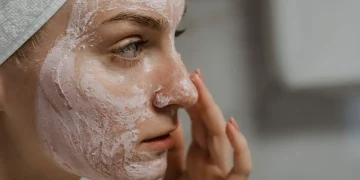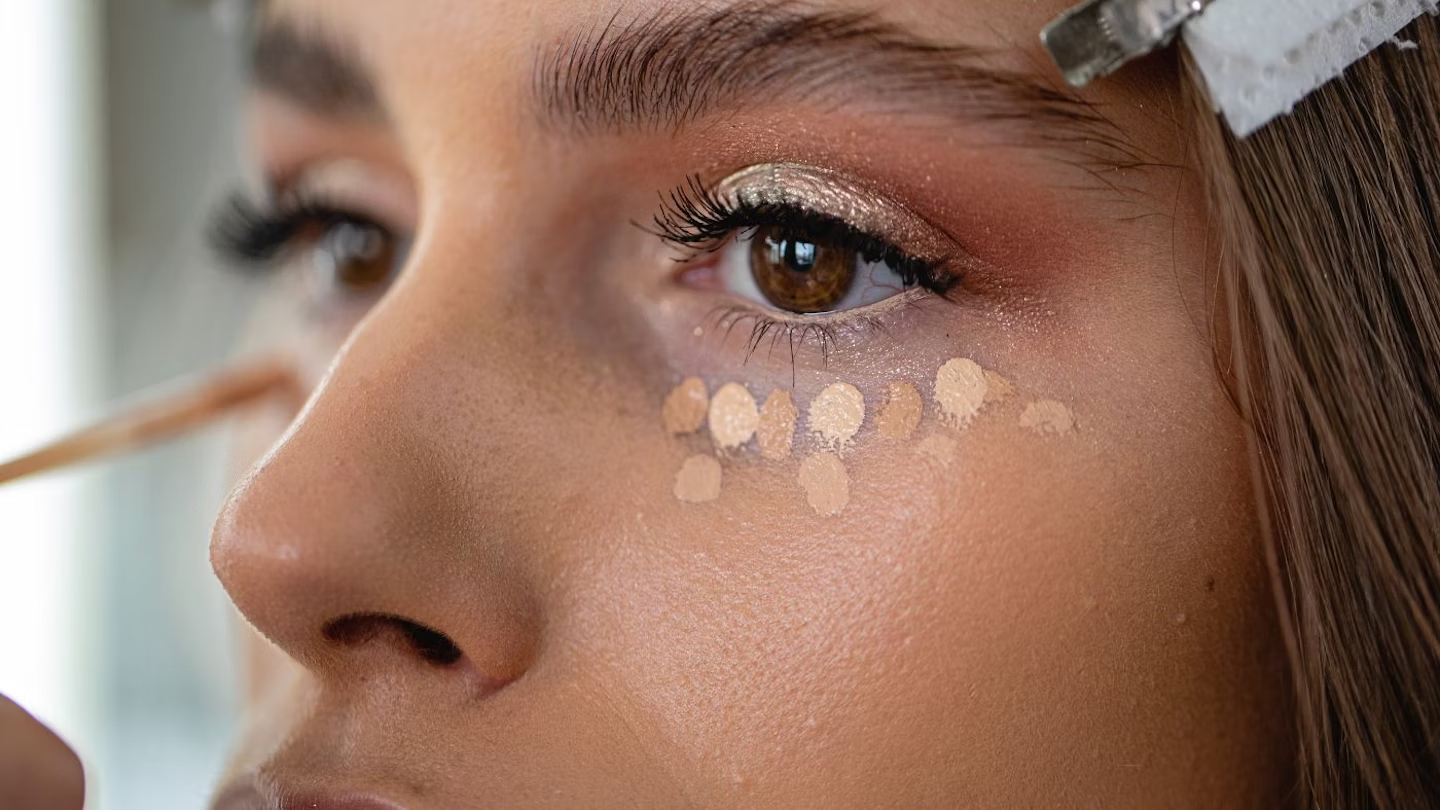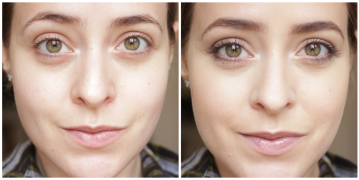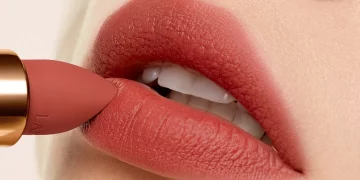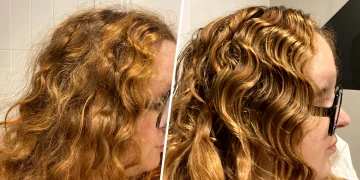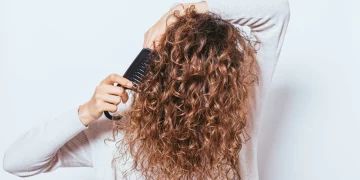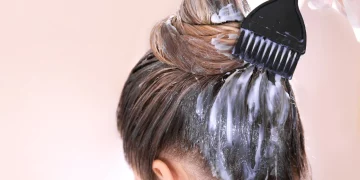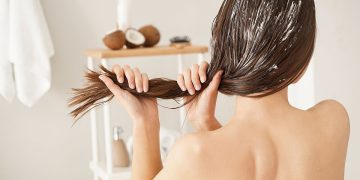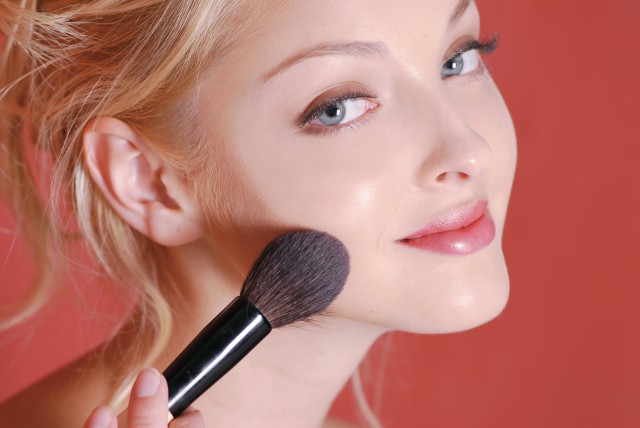Introduction
Achieving a flawless base is a fundamental step in any makeup routine. However, for many, the struggle of dealing with patchy, cakey, or flaky foundation is real. One common issue that makeup enthusiasts encounter is the appearance of powdery foundation that sits unevenly on the skin, leading to a heavy, unnatural finish. This issue can happen for a variety of reasons, but one of the key factors is skin type and the way we apply foundation.
Whether you have dry, oily, or combination skin, the right tools, application techniques, and product choices can make all the difference in how your foundation looks and lasts throughout the day. In this article, we’ll explore how different skin types can best tackle the problem of foundation caking and flaking by choosing the right tools and mastering proper techniques.
1. Understanding the Causes of Powdery Foundation
Before we dive into solutions, it’s important to first understand why foundation can appear patchy or powdery in the first place. There are a number of reasons why this happens:
- Dry Skin: When the skin is dry, it can absorb foundation unevenly, leading to patchiness. Dry skin may also cause the product to cling to rough patches or flaky areas, making the makeup look cakey or patchy.
- Oily Skin: On the other hand, oily skin can make foundation slide off, creating an uneven finish. Excess oil can cause the foundation to break apart or look greasy, making it harder to maintain a smooth appearance.
- Combination Skin: People with combination skin might find that their foundation applies smoothly on some areas (like the cheeks) but clings to dry patches (such as around the nose and chin), causing an inconsistent finish.
- Improper Prep or Technique: Foundation issues often stem from improper skin preparation, such as skipping moisturizer or using the wrong primer. The tools you use for application, whether it’s a brush, sponge, or your fingers, can also affect the outcome.
By understanding your skin’s unique needs, you can better address these challenges.
2. The Best Foundation Application Tools for Different Skin Types
a. Dry Skin: Hydration is Key
Dry skin is prone to flakiness and texture issues, so the goal when applying foundation is to create a smooth, hydrated base. Here’s how you can choose the right tools for your skin:
Tools:
- Beauty Sponge: A dampened beauty sponge is one of the best tools for dry skin. When used lightly, it presses the foundation into the skin without disturbing the moisture barrier. The dampness of the sponge helps hydrate the skin as it applies the product, resulting in a dewy, smooth finish.
- Flat Foundation Brush: If you prefer a brush, choose a flat, dense foundation brush. The synthetic bristles will help push the product into the skin while providing an even finish. Make sure to use light, tapping motions to avoid dragging the skin.
Application Techniques:
- Hydrate: Start with a rich, hydrating moisturizer and allow it to sink in before applying foundation. Don’t skip the primer—look for one that’s moisturizing and smoothing to fill in fine lines.
- Use Less Product: Dry skin tends to look cakey with too much product, so opt for lightweight foundations such as BB creams, tinted moisturizers, or hydrating foundations.
- Apply Foundation in Layers: Instead of applying a heavy layer all at once, build up the foundation in thin layers. This will help avoid a cake-like texture.
- Finish with Setting Spray: A hydrating setting spray can help lock in moisture and add a fresh, dewy finish.
Pro Tip: Stay away from powder foundations, as they can emphasize dry patches and make your skin look even more textured.
b. Oily Skin: Locking In the Matte
Oily skin can make foundation slide off or separate, especially in the T-zone (forehead, nose, chin). The key to avoiding a powdery or greasy look is ensuring the foundation stays put and remains matte without becoming overly heavy.
Tools:
- Buffing Brush: A dense, flat-top buffing brush is ideal for oily skin. This type of brush helps to blend foundation evenly and buff the product into the skin for a flawless, airbrushed finish.
- Beauty Sponge (Dry): If you like to use a sponge, opt for a dry sponge. Dry sponges will help press the foundation into your skin without adding extra moisture that could interfere with setting the makeup.
Application Techniques:
- Mattifying Primer: Oily skin benefits from a mattifying primer that minimizes shine and helps foundation adhere. Focus on the T-zone, where oil tends to accumulate.
- Choose Oil-Free Foundations: Opt for oil-free, long-wearing foundations that are designed to control shine. Stick to formulas that are lightweight and not too thick.
- Set with Powder: Lightly set your foundation with a translucent powder to absorb excess oil throughout the day and prevent your foundation from slipping.
- Avoid Overapplying: Apply only as much foundation as you need. Layering too much can make your skin appear cakey and can increase the likelihood of makeup breaking up.
Pro Tip: Use an oil-absorbing sheet throughout the day to keep shine under control without disturbing your makeup.
c. Combination Skin: Balancing the Two
Combination skin can be tricky, as it tends to have both dry and oily areas. The challenge here is to create a balanced foundation look that won’t look too matte in some areas or too dewy in others.
Tools:
- Dual-Fiber Brush: A dual-fiber brush, which has both natural and synthetic bristles, works well for combination skin. It gives an airbrushed finish, helping you control the amount of product applied in both dry and oily areas.
- Beauty Sponge: A damp beauty sponge is also a great option for combination skin because it provides a smooth finish and won’t disturb the balance of the foundation on either area.
Application Techniques:
- Targeted Primer Use: For combination skin, use a mattifying primer in the T-zone and a hydrating primer on the rest of the face. This will help control shine in oily areas while moisturizing the dry patches.
- Use a Medium Coverage Foundation: A medium-coverage foundation is ideal because it can be built up or sheered out, depending on the areas that need more coverage. Avoid full-coverage formulas, which can look heavy on combination skin.
- Set T-Zone Areas: Use a light layer of setting powder on the T-zone and leave the cheeks and other dry areas without powder to maintain a natural finish.
- Blend Well: Take time to blend your foundation into both the dry and oily areas to avoid creating patches or uneven texture.
Pro Tip: Use different products for different areas if needed—mattifying foundations for oily parts, hydrating formulas for dry areas, and light powders in strategic spots.

3. Choosing the Right Formula for Your Skin Type
The type of foundation you use is just as important as the tools and techniques. Different formulations work best for different skin types:
- For Dry Skin: Look for hydrating foundations, BB creams, or dewy-finish foundations. These will provide moisture while creating a smooth, natural finish.
- For Oily Skin: Choose oil-free foundations or matte foundations that offer long-lasting coverage without adding extra shine. Stick to powder foundations if you prefer something lightweight.
- For Combination Skin: Semi-matte or satin-finish foundations work well for combination skin, offering balance without making the face look too shiny or dry. A medium-coverage foundation can also be a good choice for this skin type.
4. Troubleshooting Common Issues
Even with the right tools and techniques, foundation issues may still occur. Here are some common problems and how to fix them:
- Patchiness or Flakiness: If your foundation looks patchy or clings to dry patches, exfoliate and moisturize well before applying makeup. Opt for a hydrating primer and a damp beauty sponge for better coverage.
- Cakey or Thick Foundation: If your foundation feels thick or heavy, try applying less product. Use a beauty sponge to press it into the skin and blend it out.
- Foundation Separating or Sliding Off: If your foundation separates, it could be due to oily skin or using a foundation that’s not suited for your skin type. Make sure to set your foundation with a translucent powder and use an oil-absorbing primer for better hold.
Conclusion
Achieving a flawless base requires more than just choosing the right foundation—it’s about understanding your skin type and applying the correct tools and techniques for the best results. Whether you have dry, oily, or combination skin, addressing the issue of powdery, cakey foundation is possible with the right approach.
By using appropriate products, mastering your application technique, and selecting the right tools, you can achieve a smooth, even foundation that enhances your natural beauty. With practice and the right knowledge, foundation issues will become a thing of the past, and you’ll be left with a radiant, long-lasting base.

